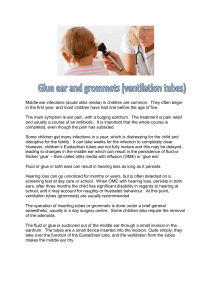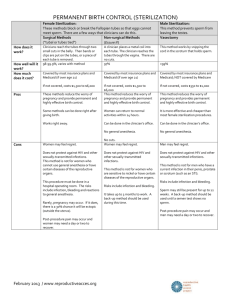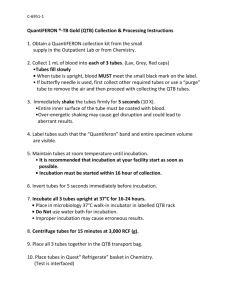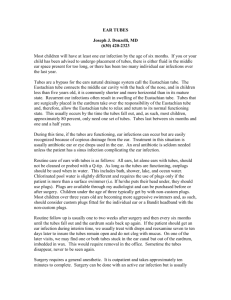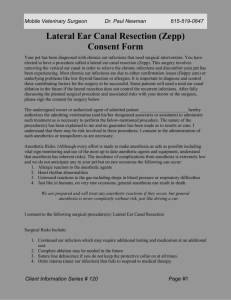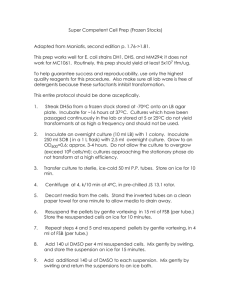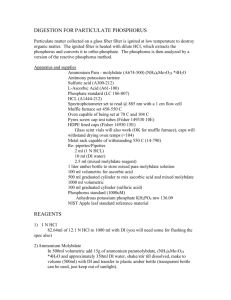Ear Tubes: Frequently Asked Questions
advertisement
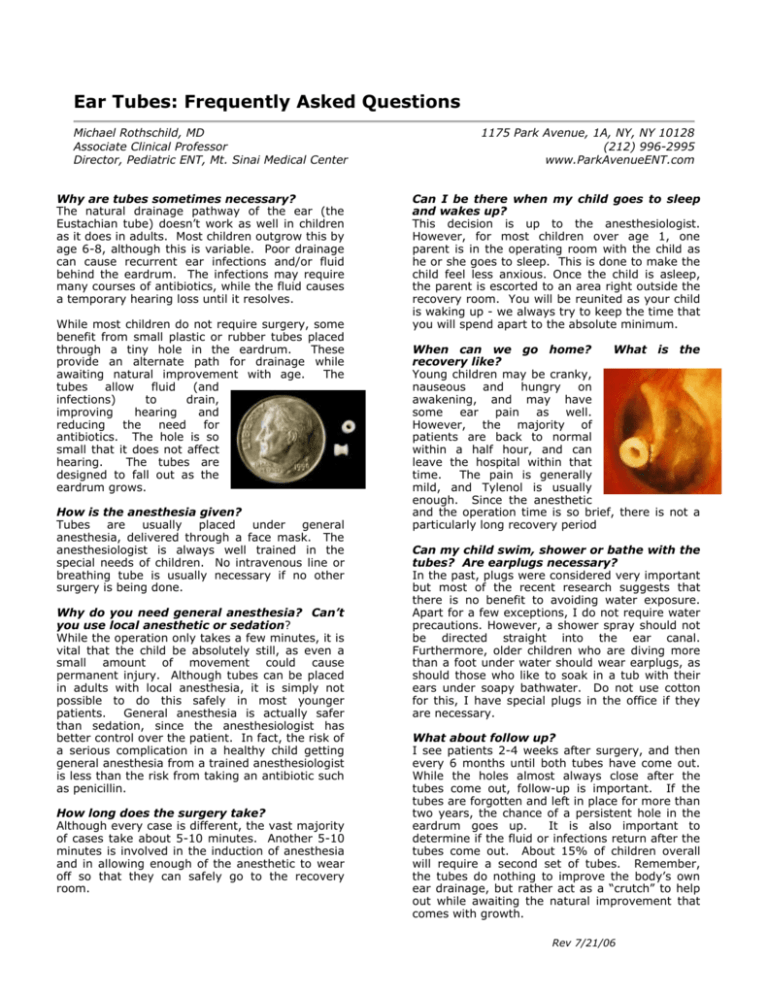
Ear Tubes: Frequently Asked Questions Michael Rothschild, MD Associate Clinical Professor Director, Pediatric ENT, Mt. Sinai Medical Center Why are tubes sometimes necessary? The natural drainage pathway of the ear (the Eustachian tube) doesn’t work as well in children as it does in adults. Most children outgrow this by age 6-8, although this is variable. Poor drainage can cause recurrent ear infections and/or fluid behind the eardrum. The infections may require many courses of antibiotics, while the fluid causes a temporary hearing loss until it resolves. While most children do not require surgery, some benefit from small plastic or rubber tubes placed through a tiny hole in the eardrum. These provide an alternate path for drainage while awaiting natural improvement with age. The tubes allow fluid (and infections) to drain, improving hearing and reducing the need for antibiotics. The hole is so small that it does not affect hearing. The tubes are designed to fall out as the eardrum grows. How is the anesthesia given? Tubes are usually placed under general anesthesia, delivered through a face mask. The anesthesiologist is always well trained in the special needs of children. No intravenous line or breathing tube is usually necessary if no other surgery is being done. Why do you need general anesthesia? Can’t you use local anesthetic or sedation? While the operation only takes a few minutes, it is vital that the child be absolutely still, as even a small amount of movement could cause permanent injury. Although tubes can be placed in adults with local anesthesia, it is simply not possible to do this safely in most younger patients. General anesthesia is actually safer than sedation, since the anesthesiologist has better control over the patient. In fact, the risk of a serious complication in a healthy child getting general anesthesia from a trained anesthesiologist is less than the risk from taking an antibiotic such as penicillin. How long does the surgery take? Although every case is different, the vast majority of cases take about 5-10 minutes. Another 5-10 minutes is involved in the induction of anesthesia and in allowing enough of the anesthetic to wear off so that they can safely go to the recovery room. 1175 Park Avenue, 1A, NY, NY 10128 (212) 996-2995 www.ParkAvenueENT.com Can I be there when my child goes to sleep and wakes up? This decision is up to the anesthesiologist. However, for most children over age 1, one parent is in the operating room with the child as he or she goes to sleep. This is done to make the child feel less anxious. Once the child is asleep, the parent is escorted to an area right outside the recovery room. You will be reunited as your child is waking up - we always try to keep the time that you will spend apart to the absolute minimum. When can we go home? What is the recovery like? Young children may be cranky, nauseous and hungry on awakening, and may have some ear pain as well. However, the majority of patients are back to normal within a half hour, and can leave the hospital within that time. The pain is generally mild, and Tylenol is usually enough. Since the anesthetic and the operation time is so brief, there is not a particularly long recovery period Can my child swim, shower or bathe with the tubes? Are earplugs necessary? In the past, plugs were considered very important but most of the recent research suggests that there is no benefit to avoiding water exposure. Apart for a few exceptions, I do not require water precautions. However, a shower spray should not be directed straight into the ear canal. Furthermore, older children who are diving more than a foot under water should wear earplugs, as should those who like to soak in a tub with their ears under soapy bathwater. Do not use cotton for this, I have special plugs in the office if they are necessary. What about follow up? I see patients 2-4 weeks after surgery, and then every 6 months until both tubes have come out. While the holes almost always close after the tubes come out, follow-up is important. If the tubes are forgotten and left in place for more than two years, the chance of a persistent hole in the eardrum goes up. It is also important to determine if the fluid or infections return after the tubes come out. About 15% of children overall will require a second set of tubes. Remember, the tubes do nothing to improve the body’s own ear drainage, but rather act as a “crutch” to help out while awaiting the natural improvement that comes with growth. Rev 7/21/06
